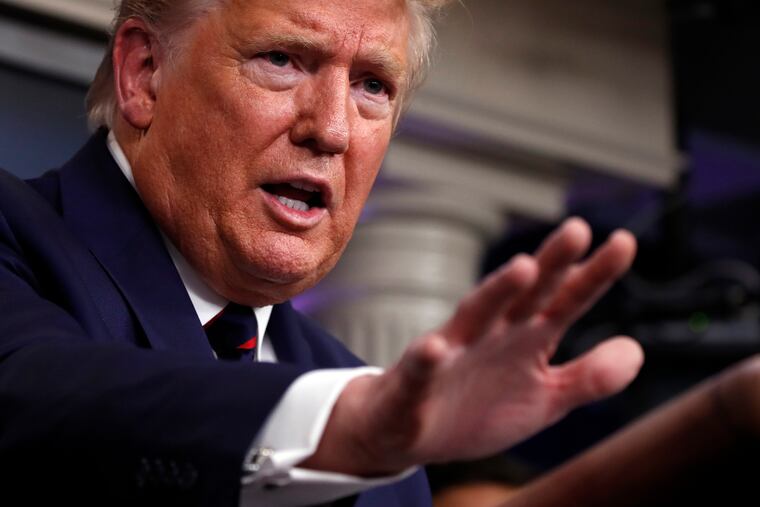Here’s how news organizations can responsibly show Trump’s coronavirus briefings | Opinion
Dean of Temple University's journalism school has a unique idea for how the president's press briefings on COVID-19 should be aired on television.

The president lies.
Just typing those words, and seeing them in print, is jolting for any journalist, especially one who grew up when the nation’s top office, no matter its occupant, was an institution to be respected and revered.
But there’s no legitimate denying, even among many supporters, that Donald Trump’s relationship with facts is dysfunctional.
As of this past weekend, the Washington Post’s “Fact Checker” had the count of Trump’s false or misleading statements at a stunning 16,241, or nearly 15 “Pinocchios” a day.
As the COVID-19 virus emerged as a pandemic, the president’s prevarications moved from a matter of politics and prater to a matter of life and death.
From Trump’s Feb. 28 dismissal of the course of the virus as “One day it’s like a miracle — it will disappear,” to his March 6 insistence that “anybody who wants a test gets a test,” to his repeatedly comparing COVID-19 to the seasonal flu, he has put Americans at risk.
For most of his 38 months in office, the medium for Trump’s whoppers was Twitter. But now he has a much bigger megaphone: the daily, televised White House coronavirus briefing. Although, as Trump brag-tweeted Sunday, the cable ratings for these briefings have been “Bachelor-Monday Night Football numbers,” many media critics have called upon the networks to stop airing them live.
“The news media, at this dangerous and unprecedented moment in world history, must put the highest priority on getting truthful information to the public,” Washington Post media writer Margaret Sullivan wrote last week. “Taking Trump’s press conferences as a live feed works against that core purpose.”
I agree — but only with the “live feed” part. Rarely have Americans had a such a large, clear, picture window into the mind of their elected leader. Watching Trump is, to use his favorite adjective, “incredible.”
I see a man who craves approval even in the wake of obvious missteps, who exhibits an aversion to accepting responsibility, who attacks journalists who challenge him with his own previously spoken words, who speaks before he thinks.
When my conservative, Trump-loving brother watches the briefings, he sees a leader who exudes charisma, who strives to inspire hope, who pushes back hard against a cynical, overly aggressive press.
Neither I nor my brother want to lose this window into our commander-in-chief’s brain and soul. But do we need it live? Certainly not. Give it to us on a 10-minute delay, time for a skilled fact checker to subject Trump’s comments to a lie detector and to give them context. Give it to us on a split-screen, with the president on one side and truth-squad commentary on the other.
And while you’re at it, use that split-screen to give us information on the reporters at the briefing and context for their questions: “That’s Jim Acosta, the CNN correspondent who has had a long-running, contentious relationship with President Trump, and has written a book about it.” “That’s Chanel Rion, of One America News Network, a conservative news operation, who wrote a story suggesting, falsely, that the coronavirus was created in a North Carolina lab.”
And networks can keep ratings, and payroll dollars, by sharing the same expert: Daniel Dale, the extraordinary, even-handed journalist CNN hired last year from the Toronto Star newspaper. Dale already is providing this sort of running analysis of Trump on Twitter. This Canadian is emerging as an American hero and has the experience and gravitas to stand up both to the president and to his fellow journalists.
So, c’mon, cable moguls, give this a try. We the People will love it — and that’s no lie.
David Boardman is the dean of the Klein College of Media and Communication at Temple University and the chair of the Lenfest Institute for Journalism, the nonprofit that owns The Inquirer.